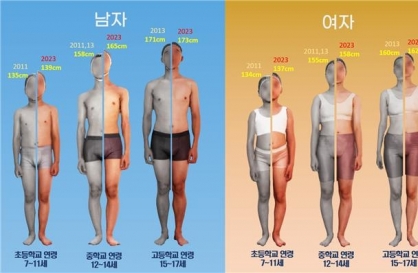Korea seen through eyes of foreign artists
Exhibition of 13 expats presents fresh views on society, people
By Lee Woo-youngPublished : June 19, 2014 - 20:46
Czech artist Klega noticed vegetables growing in every available plot of land in Seoul ― even in the narrow space between the old royal palace property and sidewalks. The sight piqued his interest, and he photographed vegetable gardens scattered across two bustling cities, Seoul and Incheon. Titled “Allotments,” the 15-photograph series on the petite gardens is one of the works by foreign artists living and working in Korea currently on display at Seoul Museum of Art.
The works expose those aspects of Korea that go little noticed by its nationals. The museum gathered 13 artists from 10 countries including Japan, Germany, India and Singapore to present their own unique perspectives on Korean society.
“To select foreign artists, I looked at a list of long-term foreign residents in Korea. Foreign residents staying long term in Korea account for 2.3 percent of the total population here,” said Jo Ara, curator of the exhibition at the press preview on Tuesday.
The works expose those aspects of Korea that go little noticed by its nationals. The museum gathered 13 artists from 10 countries including Japan, Germany, India and Singapore to present their own unique perspectives on Korean society.
“To select foreign artists, I looked at a list of long-term foreign residents in Korea. Foreign residents staying long term in Korea account for 2.3 percent of the total population here,” said Jo Ara, curator of the exhibition at the press preview on Tuesday.

“We excluded those who stayed short term and whose views are not out of a tourists’ perspective yet.”
Called “Universal Studios,” the exhibition features photographs, paintings, installations and video works. They are notable not just in terms of the context they deal with, but also in terms of visual interpretation.
German artist Alfred 23 Harth, who’s been living in the border city of Paju, found abandoned structures that were once part of a kindergarten roof. He thought the roof like the towers of Western castles. They resemble looked the castle tops of a Russian palace, colored in pastel pink and green. The “unnecessary imitation” from the West is brought to the exhibition space and displayed with shattered pieces of celadon.
“We (as artists living and working in Korea for a long time) have a responsibility to dig deeper because we live here for a long time. We have a better understanding of some deep aspects of the society that no one has recognized before,” said Harth.
Another German artist, Ingo Baumgarten, finds links between two-story residential buildings built between the 1970s and 1990s in Seoul and modern houses in Germany in his series of paintings. Currently working as professor of Western painting at the Art College of Hongik University, Baumgarten draws similarities between German and Korean houses from their exteriors and examines parts that have become old-fashioned due to Korea’s fast-changing tastes and lifestyles.
“Houses and buildings are the first thing one sees, when one begins to explore a city,” he wrote in the exhibition book. “I developed a special interest in certain houses… Architecture acts as a stage or background for almost every activity, for people’s life in the city,” the artist explained.
Japanese artist Kondo Yukako records uneventful daily life within still-life paintings of everyday objects such as her baby’s medicine bottles and diapers. Following 17th century Dutch still-life painting, she calmly portrays the food table set up for the ancestral rites of her Korean husband’s family. Painting everyday objects could be the easiest way for her to continue her art in Korea, but it’s also one way to “realize the transience of life and add the beautiful weight of it,” according to the artist’s note.
The exhibition continues through Aug. 10 at the Seoul Museum of Art. A roundtable discussion with the participating artists will be held from 2-5 p.m. on June 26 at the museum. A talk with two artists, Paul Kajander and Luuk Schroder, is scheduled for July 3. For more information, visit http://sema.seoul.go.kr.
By Lee Woo-young (wylee@heraldcorp.com)





![[Graphic News] Number of coffee franchises in S. Korea rises 13%](http://res.heraldm.com/phpwas/restmb_idxmake.php?idx=644&simg=/content/image/2024/05/02/20240502050817_0.gif&u=)



![[Robert J. Fouser] AI changes rationale for learning languages](http://res.heraldm.com/phpwas/restmb_idxmake.php?idx=644&simg=/content/image/2024/05/02/20240502050811_0.jpg&u=)







![[Eye Interview] 'If you live to 100, you might as well be happy,' says 88-year-old bestselling essayist](http://res.heraldm.com/phpwas/restmb_idxmake.php?idx=652&simg=/content/image/2024/05/03/20240503050674_0.jpg&u=)
